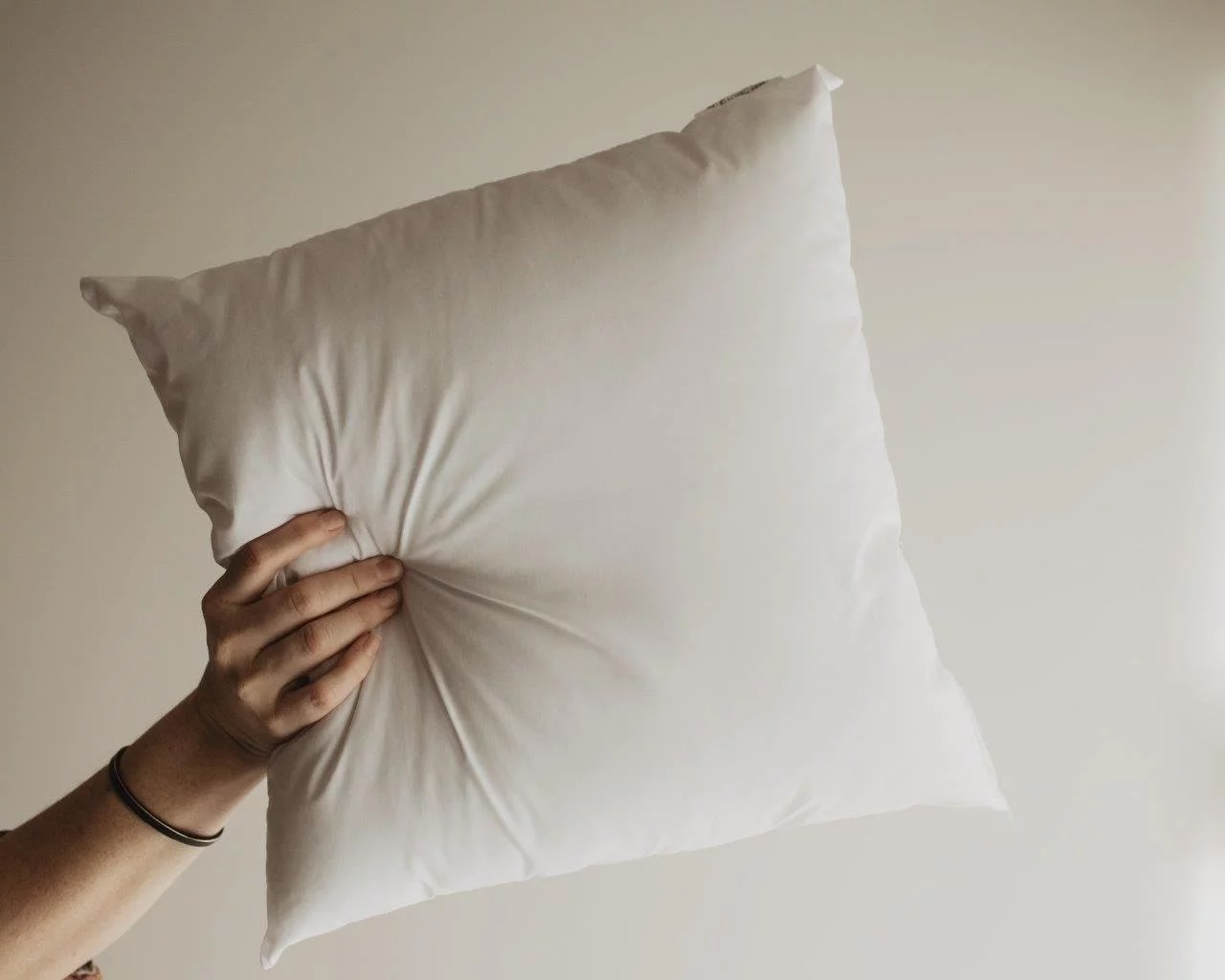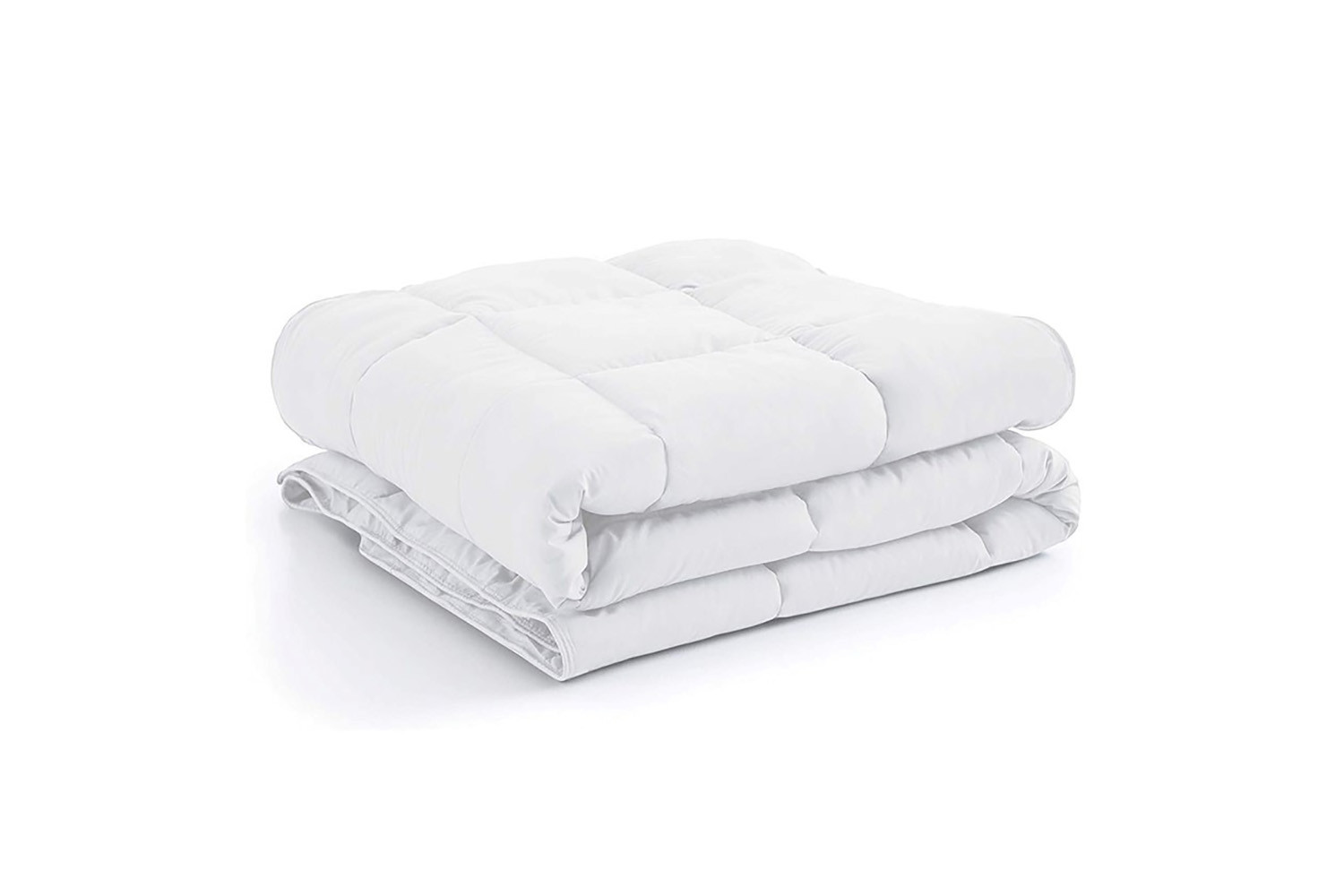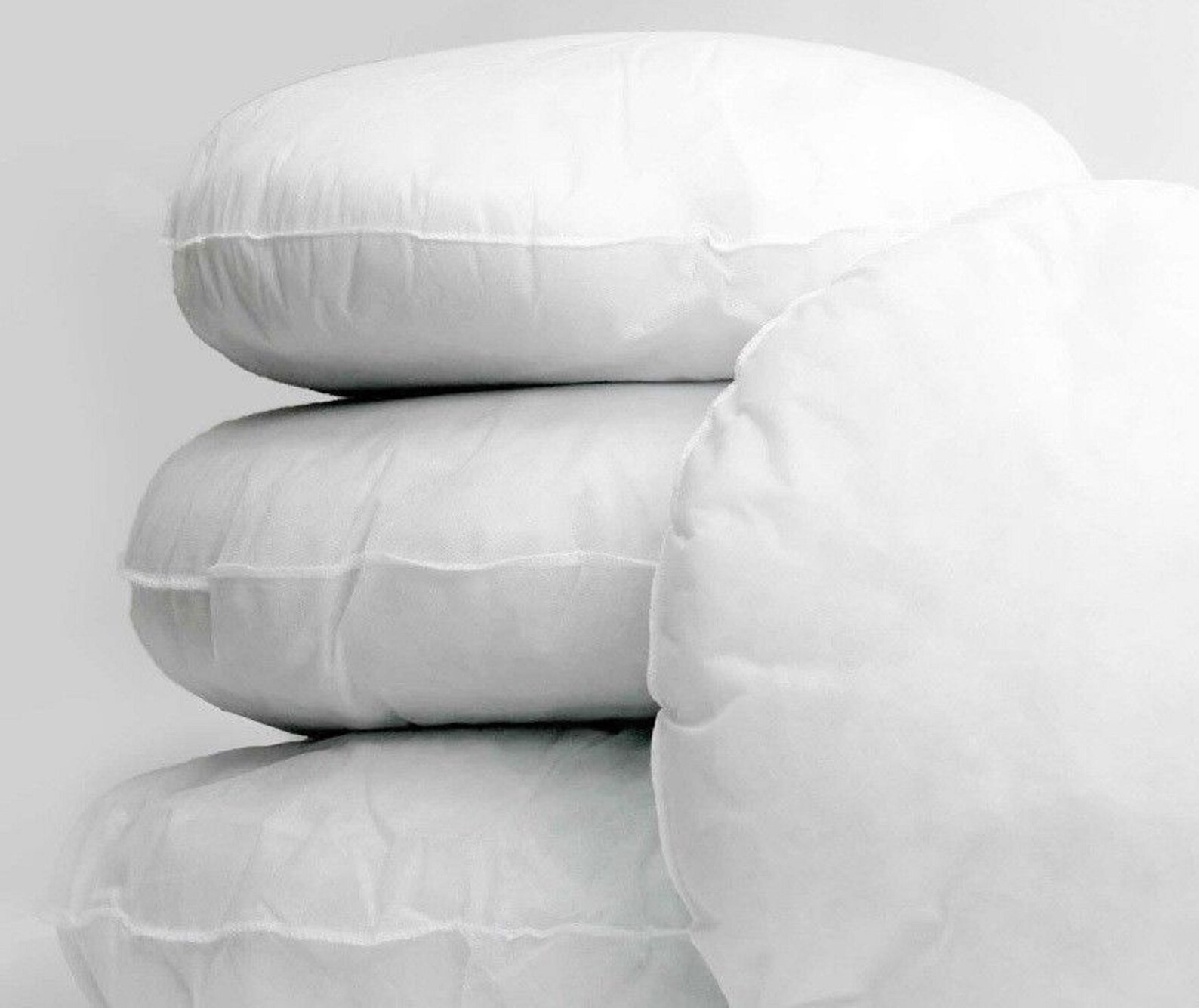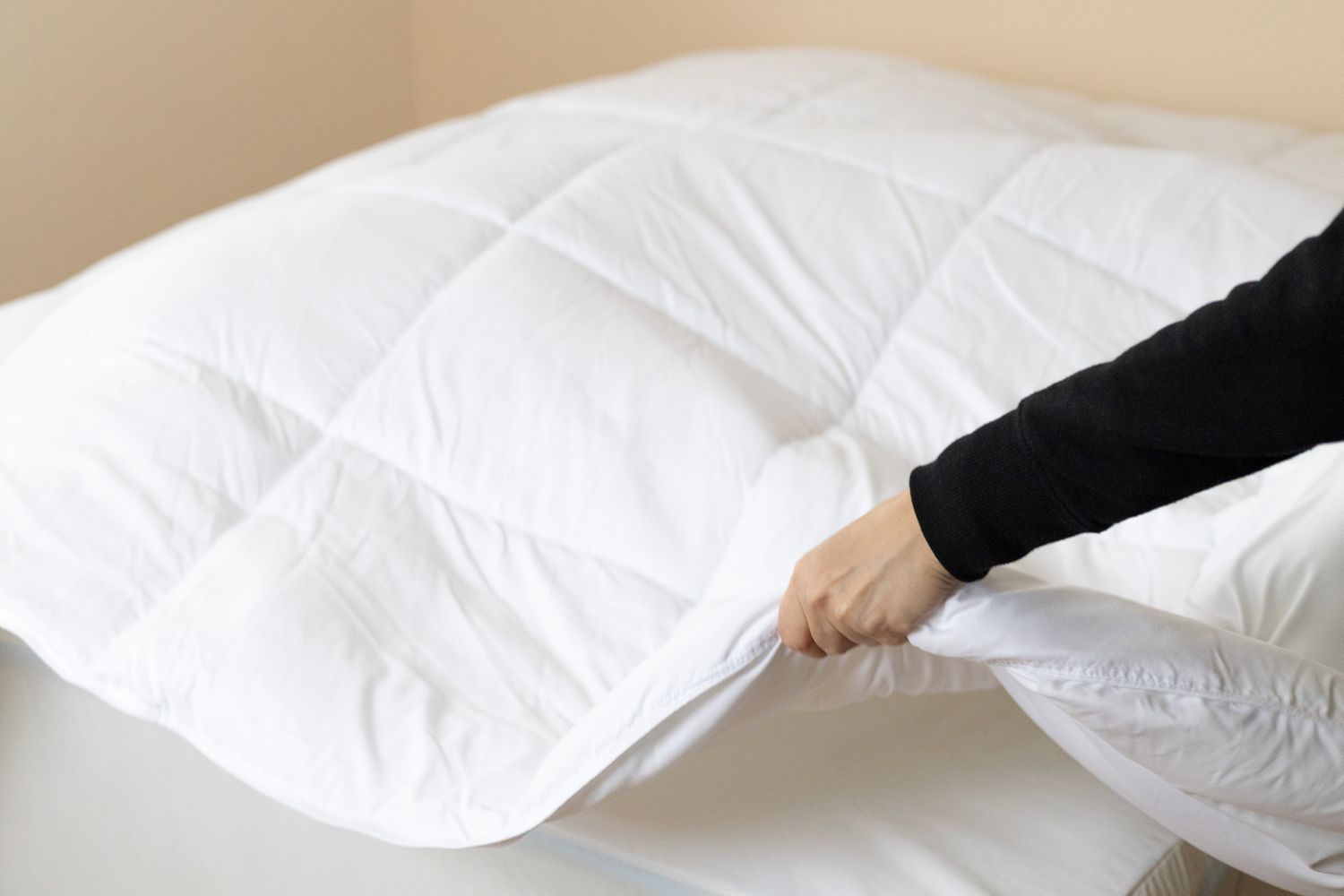

Articles
How To Wash A Polyester Duvet
Modified: October 18, 2024
Discover effective tips and techniques for washing polyester duvets in this comprehensive guide. Read our articles to ensure your duvet stays fresh, clean, and cozy.
(Many of the links in this article redirect to a specific reviewed product. Your purchase of these products through affiliate links helps to generate commission for Storables.com, at no extra cost. Learn more)
Introduction
Welcome to our guide on how to wash a polyester duvet. A polyester duvet is a popular choice for bedding due to its durability, warmth, and affordability. Whether you have just purchased a new duvet or you are looking to freshen up your existing one, regular cleaning is essential to maintain its cleanliness and extend its lifespan.
In this article, we will provide you with step-by-step instructions on how to wash a polyester duvet effectively. We will cover both hand-washing and machine-washing methods, as well as provide you with tips and precautions to ensure the process goes smoothly.
Before we delve into the washing process, let’s talk about why polyester duvets are a great choice for bedding in the first place.
Key Takeaways:
- Polyester duvets are durable, hypoallergenic, and easy to maintain. Follow specific care label instructions and use mild detergent to hand-wash or machine-wash, ensuring a clean and cozy bedding experience.
- Proper preparation, gentle washing, and thorough drying are essential for maintaining the quality and longevity of polyester duvets. Follow recommended frequency guidelines and storage practices to enjoy years of comfort and warmth.
Why Choose a Polyester Duvet
When it comes to choosing bedding, a polyester duvet offers several advantages that make it a popular choice for many individuals. Here are a few reasons why you might consider opting for a polyester duvet:
1. Durability: Polyester is known for its durability and ability to withstand wear and tear. A polyester duvet can endure frequent washing and maintain its shape and quality over time.
2. Hypoallergenic: Polyester duvets are hypoallergenic, making them an excellent choice for individuals with allergies or sensitivities. Polyester fibers do not harbor dust mites or allergens, helping to promote a clean and healthy sleep environment.
3. Affordability: Polyester duvets are often more budget-friendly compared to natural fillings, such as down or feathers. If you’re looking for a cost-effective bedding option without compromising on quality, polyester duvets are a great choice.
4. Easy Maintenance: Polyester duvets are relatively low-maintenance and easy to care for. They are machine washable, making them convenient for regular cleaning. Polyester also dries quickly, reducing the risk of mold or mildew growth.
5. Lightweight and Warm: Polyester duvets offer an excellent balance between warmth and weight. They provide sufficient insulation without feeling heavy or bulky, ensuring a comfortable night’s sleep.
6. Color and Design Options: Polyester duvets come in a wide range of colors, patterns, and designs, allowing you to find the perfect bedding that suits your personal style and complements your bedroom decor.
7. Environmentally Friendly: In recent years, there has been a growing trend towards using recycled polyester in the production of duvets. By choosing a duvet made from recycled polyester, you can contribute to reducing waste and promoting sustainability.
Now that you understand the benefits of a polyester duvet, it’s time to learn how to properly care for and wash it.
Preparing for Washing
Before you start washing your polyester duvet, there are a few steps you need to take to prepare it properly. Following these steps will help ensure a successful cleaning process and prevent any damage to your duvet:
1. Check the Care Label: The first step is to check the care label attached to your duvet. The care label will provide specific instructions on how to wash and care for your duvet. It is essential to follow these instructions carefully to avoid any potential damage.
2. Spot Treat Stains: If there are any noticeable stains or spills on your duvet, it is advisable to spot treat them before washing. Gently dab the stain with a mild detergent or stain remover, following the instructions on the product. Allow the spot treatment to sit for a few minutes before proceeding to wash the duvet.
3. Remove Duvet Cover: If your duvet has a removable cover, take it off before washing. Wash the duvet cover separately according to its care label instructions.
4. Check for Rips or Tears: Inspect your duvet for any rips, tears, or loose stitching. Repair any damages to ensure that your duvet doesn’t get further damaged during the washing process.
5. Shake and Fluff: Before placing your duvet in the washing machine, give it a good shake and fluff. This will help loosen any dust or debris and ensure an even distribution of the filling.
6. Use a Large Capacity Machine: If possible, use a washing machine with a large capacity to accommodate the size of your duvet. A machine that is too small may not provide enough space for the duvet to move freely, resulting in inadequate cleaning.
7. Choose the Right Detergent: Select a gentle detergent specifically designed for washing polyester fabrics. Avoid using harsh chemicals, bleach, or fabric softeners, as they can damage the fibers of your duvet.
By following these preparation steps, you can ensure that your polyester duvet is ready for a thorough and effective cleaning. In the next sections, we will discuss both hand-washing and machine-washing methods for your polyester duvet.
Hand-Washing a Polyester Duvet
Hand-washing your polyester duvet is a gentle and effective way to clean it, especially if you don’t have access to a large washing machine. Follow these steps to hand-wash your duvet:
1. Fill a Bathtub or Large Basin: Fill a clean bathtub or large basin with lukewarm water. Make sure there is enough water to fully submerge the duvet.
2. Add Mild Detergent: Add a small amount of mild detergent to the water and mix it well. Be sure to use a detergent specifically formulated for delicate fabrics.
3. Submerge the Duvet: Immerse the duvet in the soapy water and gently agitate it to ensure that the detergent is evenly distributed.
4. Soak and Spot Clean: Allow the duvet to soak in the soapy water for about 15-20 minutes. During this time, you can gently spot clean any stains or heavily soiled areas using a soft bristle brush or sponge.
5. Rinse Thoroughly: After soaking, drain the soapy water and refill the tub or basin with clean water. Rinse the duvet thoroughly until all traces of detergent are removed. You may need to repeat the rinsing process a few times to ensure proper removal.
6. Squeeze and Drain: Carefully squeeze out excess water from the duvet. Avoid wringing or twisting, as this can damage the filling. Once most of the water is drained, transfer the duvet to a large towel or blanket.
7. Roll and Press: Roll up the duvet in the towel or blanket, gently pressing down to remove any remaining water. Repeat this process with dry towels until the duvet feels only slightly damp.
8. Air Dry: Lay the duvet flat on a clean surface or hang it on a clothesline to air dry. Make sure it is in a well-ventilated area away from direct sunlight or heat sources. Rotate and fluff the duvet occasionally to ensure even drying.
9. Patience is Key: Allow the duvet to dry completely, which may take several hours or even a day or two. Ensure that it is completely dry before storing or placing it back on your bed.
Hand-washing your polyester duvet is a time-consuming process but can be a great option if you want to give your duvet some extra care and attention. However, if you prefer a quicker and more convenient method, you can opt for machine-washing.
When washing a polyester duvet, use a gentle cycle with cold water and mild detergent. Avoid using bleach or fabric softener, and tumble dry on low heat or air dry to prevent damage to the fabric.
Machine-Washing a Polyester Duvet
Machine-washing your polyester duvet is a convenient and efficient way to clean it, especially if you have a washing machine with a large capacity. Follow these steps to machine-wash your duvet:
1. Check the Care Label: Before proceeding, double-check the care label on your duvet for any specific machine-washing instructions. Follow the recommended water temperature, cycle, and other guidelines provided.
2. Pre-Treat Stains: If there are any noticeable stains on your duvet, pre-treat them using a spot cleaner or stain remover. Gently rub the cleaner into the stained area following the product instructions.
3. Load the Duvet into the Machine: Place your polyester duvet into the washing machine, making sure it is evenly distributed in the drum. It is recommended to wash the duvet with a few towels or similar items to balance the load.
4. Use a Gentle Cycle: Select a gentle or delicate cycle on your washing machine to ensure a careful and thorough cleaning process. Avoid using a heavy-duty cycle or one with a high spin speed, as it may cause damage to the duvet.
5. Choose the Right Detergent: Use a mild detergent specifically formulated for delicate fabrics or synthetic materials. Avoid using bleach or harsh chemicals, as they can damage the fibers of your duvet.
6. Wash in Cold or Warm Water: Follow the care label’s instructions regarding the water temperature. In general, using cold or warm water is recommended for washing polyester duvets, as hot water can cause shrinking or fading.
7. Double Rinse: Set your washing machine to perform a double rinse cycle to ensure that all detergent residue is properly removed from the duvet. This will help prevent any skin irritation or discomfort when using the duvet.
8. Tumble Dry on Low Heat: After washing, transfer the duvet to a large-capacity dryer and set it to a low heat or delicate cycle. Adding a few dryer balls can help fluff up the duvet and prevent clumping.
9. Check for Dryness: Regularly check the duvet during the drying process to ensure that it is drying evenly and thoroughly. Polyester duvets typically dry relatively quickly, but depending on the size and thickness, it may take a few cycles.
10. Final Fluffing: Once the duvet is fully dry, remove it from the dryer and give it a gentle shake and fluff. This will help restore its loft and ensure that the filling is evenly distributed.
Machine-washing your polyester duvet is a convenient option that can save you time and effort. However, be sure to follow the care label instructions and use caution to avoid any potential damage to your duvet.
Read more: How To Clean A Polyester Blanket
Drying a Polyester Duvet
Properly drying your polyester duvet is essential to maintain its shape, fluffiness, and overall quality. Follow these steps to ensure your duvet is dried thoroughly:
1. Check the Care Label: Before proceeding, refer to the care label on your duvet for specific drying instructions. It may provide guidance on heat settings or recommend air-drying instead.
2. Tumble Dry on Low Heat: If your duvet is suitable for machine drying, place it in a large-capacity dryer and set it to a low heat or delicate cycle. Avoid using high heat, as this can damage the polyester fibers.
3. Add Dryer Balls: To help fluff up the duvet and prevent clumping, consider adding a few dryer balls or clean tennis balls to the dryer. These will aid in maintaining the loftiness of the filling and promote even drying.
4. Monitor the Drying Process: Regularly check the duvet during the drying process to ensure it is drying evenly. Polyester duvets typically dry relatively quickly, but depending on the size and thickness, it may take several cycles to ensure thorough drying.
5. Air-Drying: If air-drying is recommended or if you prefer this method, lay the duvet flat on a clean surface or hang it on a clothesline. Ensure that it is in a well-ventilated area away from direct sunlight or heat sources.
6. Rotate and Fluff: Throughout the drying process, whether using a dryer or air-drying, periodically rotate and fluff the duvet. This helps prevent any clumping of the filling, ensuring an evenly dried and lofty duvet.
7. Patience is Key: Regardless of the drying method chosen, allow the duvet to dry completely before storing or placing it back on your bed. This may take several hours or even a day or two, depending on the conditions and thickness of the duvet.
8. Final Fluffing: Once the duvet is fully dry, give it a final gentle shake and fluff to restore its loftiness and ensure that the filling is evenly distributed.
By following these steps, you can ensure that your polyester duvet is thoroughly dried, maintains its shape, and is ready to provide you with comfortable and cozy nights of sleep.
Tips and Precautions
When washing a polyester duvet, it’s important to keep in mind a few tips and precautions to ensure the best results and prevent any damage. Here are some handy tips to follow:
1. Read the Care Label: Always read and follow the care instructions provided on the duvet’s label. These instructions are specific to your duvet and will guide you on the best cleaning methods and precautions to take.
2. Avoid Overloading: Whether hand-washing or machine-washing, avoid overloading the cleaning vessel. This allows enough space for the duvet to move freely and ensures thorough cleaning.
3. Use a Delicate Cycle: When machine-washing, opt for a gentle or delicate cycle to protect the fabric and filling of your duvet. This reduces the risk of damage and preserves its quality over time.
4. Spot Treat Stains: Before washing, treat any stains or spills on the duvet specifically. This helps prevent the need for aggressive washing and minimizes the risk of setting stains into the fabric.
5. Avoid Bleach: Avoid using bleach or products containing bleach on your polyester duvet. Bleach can weaken the fabric and cause discoloration or damage to the filling.
6. Use Mild Detergent: Opt for a mild detergent that is specifically designed for delicate fabrics or synthetic materials. Harsh detergents can break down the fibers and reduce the lifespan of your duvet.
7. Avoid High Heat: When drying your duvet, avoid high heat settings as it can damage the polyester fibers. Stick to low heat or delicate settings and remove the duvet from the dryer while it is still slightly damp to prevent overheating.
8. Regularly Fluff: After washing and drying, regularly fluff your duvet to distribute the filling evenly and maintain its loftiness. This ensures that your duvet remains comfortable and retains its shape.
9. Store Properly: Store your clean and dry duvet in a well-ventilated space. Avoid storing it in plastic bags or airtight containers, as this can trap moisture and result in musty odors or mold growth.
10. Follow Frequency Guidelines: It is recommended to wash your polyester duvet every 6-12 months, or as needed. Following regular cleaning intervals helps maintain the cleanliness and performance of your duvet.
By following these tips and taking necessary precautions, you can ensure that your polyester duvet remains in excellent condition, providing you with comfort and warmth for years to come.
Conclusion
In conclusion, washing a polyester duvet doesn’t have to be a daunting task. With the right techniques and precautions, you can effectively clean your duvet and keep it in pristine condition for years of cozy nights’ sleep.
Whether you choose to hand-wash or machine-wash your polyester duvet, always refer to the care label for specific instructions. Take the time to properly prepare your duvet for washing, including spot treating any stains and checking for damages. Use a mild detergent and avoid bleach or harsh chemicals that can damage the fabric and filling.
When drying your duvet, opt for a low heat setting and regularly check for dryness. Tumble dry with dryer balls or air dry in a well-ventilated area to restore the duvet’s fluffiness. Remember to periodically fluff the duvet during the drying process to maintain even distribution of the filling.
By following the provided tips and precautions, you can ensure that your polyester duvet remains clean, fresh, and comfortable. Regular washing and proper care will help extend the lifespan of your duvet, allowing you to enjoy its warmth and coziness for years to come.
Remember, always consult the care label’s instructions and use your best judgment when it comes to washing and caring for your duvet. If you have any concerns or questions, it is always advisable to seek professional advice or contact the manufacturer for specific guidance.
Now that you have the knowledge and steps required for washing a polyester duvet, you can confidently maintain its cleanliness and longevity while enjoying a restful and comfortable sleep experience.
Frequently Asked Questions about How To Wash A Polyester Duvet
Was this page helpful?
At Storables.com, we guarantee accurate and reliable information. Our content, validated by Expert Board Contributors, is crafted following stringent Editorial Policies. We're committed to providing you with well-researched, expert-backed insights for all your informational needs.















0 thoughts on “How To Wash A Polyester Duvet”